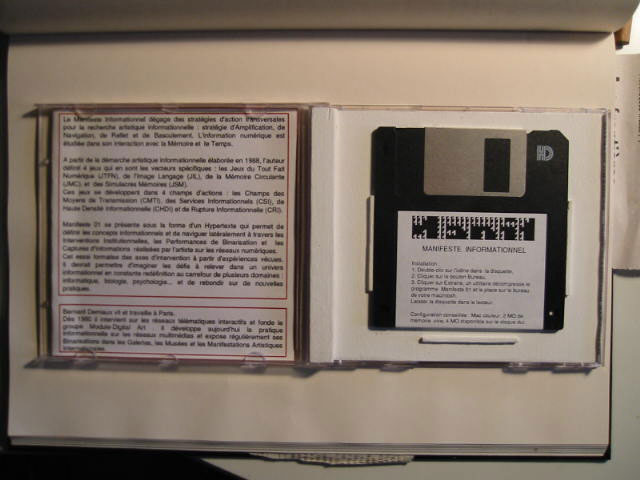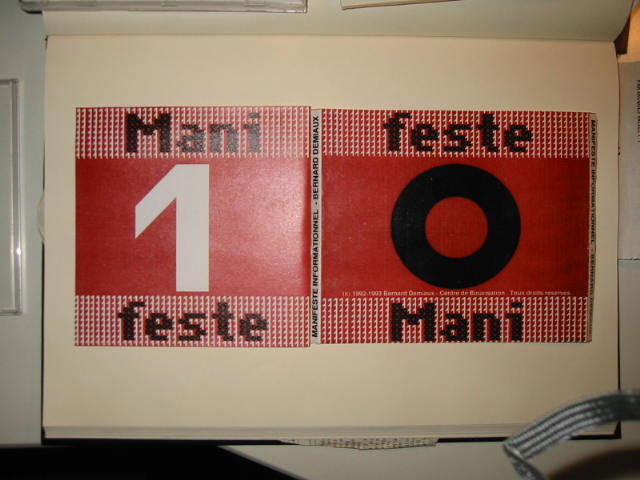
This study presents a reflection based on daily practical experience in Information Technology (IT) and establishes some potential crossroads in the domain of IT Art.
The IT Manifesto defines action strategies for artistic IT information transfer.
It formally defines the avenues of artistic involvement. It should enable us to imagine the challenges faced in a constantly shifting information technology world that lies at the crossroads between such disciplines as computing, biology and psychology and should lead to the discovery of new methods.
The concepts proposed must be considered as stages in an ongoing IT process.
These concepts have been defined in order to energize activity and not to classify it.
The subject presented is Digital Information in interaction with Time and Memory.
Based on the conceptual diagram presenting the IT process which I elaborated in 1988 and which proposes a series of challenges to the artist, four IT games are defined with the following vectors :
The Game of Digital Off the Peg (GDOP)
The Game of Language Image (GLI)
The Game of Rotating Memory (GRM)
The Game of Memory Simulation (GMS)

With the help of this syntax, the IT strategy is applied in four precise fields.
The first field is the Field of Systems of Digital Transmission (FSDT).
It gathers together the mediums of broadcasting and transmission of information: Digital networks, cables, satellites, fax, minitels...
To work in the first field consists of using the networks of information as such and to send out on these networks binary images (0/1) so that the form of the message is identified with the form of the transmission.
For this we make use of the strategy of Amplify.
The second field is the Field of Information Services (FIS). This field is composed of the software services presented on data networks: Catalogs, databases, electronic mail, directories...
To work in the second field consists of capturing elements of information and presenting their paths of access within the consulted service. This is the strategy of Navigate.
The third field is the Field of High Density Information (FHDI). To work in the third field consists of defining the locations of information which are highly concentrated and then reflecting their digital mirror-image. This is the strategy of Reflect.
This study presents examples of potential strategies for Businesses and Institutions.
The fourth field is the Field of Information Rupture (FIR). To work in the fourth field consists of defining the elements which are in the process of disappearing, being redefined or shifting in a significant way (change of memory state). It concerns locating these elements through their images carried in the networks and applying to them a digital strategy showing the rupture of meaning.
This is the strategy of Shift.
I describe some digital operations within this area, starting with the fields of Nature, Body, Gesture and Religion.
Bernard Demiaux